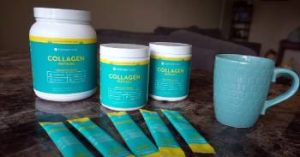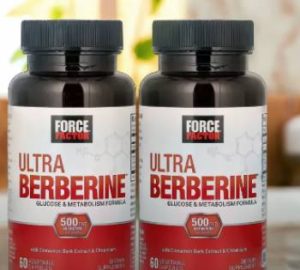If you’re struggling with an enlarged prostate, Aquablation therapy might just be your ticket to relief. This cutting-edge, minimally invasive procedure uses a robotic waterjet to zap excess tissue, easing urinary symptoms without the heavy side effects of traditional surgeries. I’ve seen it work wonders, and I’m betting you’ll be impressed too. It’s precise, fast, and preserves your quality of life in ways other treatments can’t match. Don’t let prostate issues hold you back—talk to your urologist about Aquablation and take the first step toward feeling like yourself again.
My Experience with Aquablation Therapy

At 62, I wasn’t ready to let an enlarged prostate—benign prostatic hyperplasia, or BPH—run my life. The constant trips to the bathroom, weak stream, and waking up three times a night were wearing me down. I tried medications, but they barely dented the problem and left me dizzy. My urologist mentioned Aquablation, a new procedure using a robotic waterjet guided by ultrasound. It sounded futuristic, but I was desperate for something that didn’t involve major surgery or risking my sexual function, so I signed up.
The prep was straightforward—blood tests, a physical, and a chat about stopping my aspirin. On the day, I went under general anesthesia, so I was out cold for the whole thing. The procedure took about an hour, and I woke up with a catheter, which wasn’t fun but manageable. I stayed overnight in the hospital, and by the next morning, the catheter was out, and I was heading home. There was some burning when I peed for a few days, but nothing a little over-the-counter pain relief couldn’t handle.
By week two, I felt a shift. My stream was stronger, and I wasn’t sprinting to the bathroom every hour. By month one, nighttime wake-ups dropped to once, sometimes zero. The best part? No impact on my sex life—something I’d been terrified about with other options. Six months later, I’m sleeping through the night and living without that constant urinary nag. Aquablation wasn’t a magic wand, but it gave me my freedom back, and I’m grateful I took the leap.
What Makes Aquablation Unique
Aquablation therapy, developed by PROCEPT BioRobotics, tackles BPH by using a heat-free, high-pressure waterjet to remove excess prostate tissue. Guided by real-time ultrasound and a cystoscope, the surgeon maps the prostate with pinpoint accuracy, ensuring only the problematic tissue is targeted. This robotic precision minimizes damage to surrounding structures like nerves and the urinary sphincter, which are critical for sexual and bladder function. Unlike traditional methods, it’s incision-free, entering through the urethra, and works on prostates of any size. Backed by clinical trials, it’s FDA-approved and gaining traction for its balance of efficacy and low side effects.
Maintenance Tips for Aquablation Recovery
Getting the most out of Aquablation means taking care of yourself post-procedure. Here’s how I stayed on track and what you can do.
- Follow Your Urologist’s Orders: Your doc will give you a game plan—mine said no heavy lifting for two weeks and to drink tons of water. I stuck to it religiously, and it kept complications at bay. Check in at one, six, and twelve weeks to monitor progress; I caught a minor issue early because I didn’t skip my follow-ups.
- Stay Hydrated: Water’s your best friend after Aquablation. I aimed for 80 ounces a day to flush my bladder and ease that burning sensation. It also helped dilute any blood in my urine, which cleared up faster than I expected. Keep a bottle handy to make it second nature.
- Manage Discomfort: Expect some stinging when you pee—it’s normal but annoying. I used over-the-counter pain meds as my doc okayed, and warm baths helped too. Avoid spicy foods or caffeine for a bit; they irritated my bladder early on. By week two, I was back to my coffee with no issues.
- Ease Back into Activity: I was itching to hit the gym, but my urologist said to wait three weeks for strenuous stuff. I started with short walks—10 minutes a day—and built up slowly. It kept my energy up without stressing my healing urethra. Listen to your body; pushing too hard can set you back.
- Watch for Warning Signs: Most side effects are mild, but I kept an eye out for red flags like heavy bleeding or fever. My doc gave me a number to call if anything felt off, and I used it once when my urine looked cloudy—turned out fine, but better safe than sorry. Trust your gut and reach out.
Pros and Cons of Aquablation Therapy

Pros:
Let’s talk about why Aquablation has me singing its praises and why it might be a fit for you.
- Minimally Invasive Approach: No scalpels, no stitches—just a tiny probe through your urethra. I was back home in a day, with no scars to show for it. Compared to open surgery, it’s a breeze, and the recovery’s faster, so you’re not sidelined for weeks.
- Preserves Sexual Function: I was nervous about losing my mojo, but Aquablation’s precision spares the nerves tied to erections and ejaculation. Studies show most guys—up to 90%—keep their sexual function intact, unlike some other procedures that can leave you with retrograde ejaculation.
- Effective Symptom Relief: My urinary woes—weak stream, urgency, incomplete emptying—are mostly gone. Clinical trials, like the WATER study, report a 70% drop in symptom scores, with urine flow improving from 6 to 21 ml per second. That’s real relief you can feel.
- Works for Any Prostate Size: Whether your prostate’s small or massive, Aquablation handles it. Unlike some treatments limited to glands under 80 grams, this one’s versatile, which meant I didn’t have to worry about my prostate’s size disqualifying me.
- Quick Procedure Time: The whole thing took under an hour, with the actual tissue removal clocking in at about 8 minutes. Less time under anesthesia meant I felt less groggy post-op, and the efficiency kept my hospital stay short and sweet.
Cons:
Aquablation’s not perfect, so let’s unpack where it falls short.
- Overnight Hospital Stay: Even though it’s minimally invasive, you’re stuck in the hospital overnight with a catheter: not exactly a party. I found it uncomfortable, and while it’s only 24 hours, procedures like Rezum let you go home the same day.
- Risk of Bleeding: There’s a chance of bleeding, especially with larger prostates: mine was 70 grams, and I had some pink urine for a week. Early studies noted higher transfusion rates, though newer techniques like bladder neck cautery have cut this risk significantly.
- Not for Everyone: Certain conditions—like bleeding disorders or prior prostate surgery—can rule you out: my friend with a clotting issue was steered toward other options. If your prostate’s over 150 grams or you’ve got severe kidney problems, your doc might hesitate.
- Cost and Availability: It’s pricey, and not every hospital offers it: I had to travel an hour to a center with the AquaBeam system. Insurance coverage varies, and without it, you’re looking at thousands out of pocket, which isn’t pocket change.
- Mild Side Effects: Expect some burning or urgency while peeing for a week or two: I had to grit my teeth a few times. These fade, but they’re annoying, and if you’re hoping for zero discomfort, you might be disappointed.
Also Read: My Experience With Weider Prime Prostate Health
Aquablation Therapy Vs. Other Treatments
I looked at plenty of options before choosing Aquablation. Here’s how it stacks up against five others I considered.
- Aquablation Therapy Vs. TURP
Transurethral resection of the prostate (TURP) is the old-school gold standard, using an electric loop to shave off prostate tissue. It’s effective, with symptom relief similar to Aquablation’s 70% score drop. But it carries a higher risk—50-90%—of retrograde ejaculation, which was a dealbreaker for me. TURP’s also got longer catheter times, and I saw bloodier urine with friends who chose it. Aquablation’s robotic precision and lower side effect profile won me over, though TURP’s more widely available and often cheaper if insurance’s tight.
- Aquablation Therapy Vs. HoLEP
Holmium laser enucleation (HoLEP) uses a laser to carve out prostate tissue, great for big glands. It’s efficient, with better volume reduction than Aquablation in some studies, and shorter operating times—59 minutes versus 87. But it hit me harder on ejaculation—most guys lose it—and I wasn’t thrilled about the steeper complication rate in early trials. Aquablation’s edge was its three-month boost in continence and sexual function, though HoLEP caught up later. If you’ve got a massive prostate, HoLEP’s solid, but I wanted Aquablation’s gentler start.
- Aquablation Therapy Vs. Rezum
Rezum uses steam to shrink prostate tissue, an office-based option that sounded low-key. It’s quick, no hospital stay, and preserves ejaculation for most. I liked that it’s less invasive, but it’s best for smaller prostates—under 80 grams—and my 70-gram gland was pushing it. Rezum’s relief is slower, taking weeks, and some guys need retreatment. Aquablation’s immediate results and ability to handle any size tipped the scales for me, though Rezum’s a good pick if you want to avoid anesthesia.
- Aquablation Therapy Vs. UroLift
UroLift pins back prostate tissue with tiny implants, done in a doctor’s office. It’s super fast, preserves sexual function, and you’re out the door same-day—no catheter. I was tempted, but it’s less effective for severe symptoms or big prostates, and my IPSS score of 22 needed more firepower. Aquablation’s robotic precision offered better symptom relief—70% versus UroLift’s 50%—and tackled my gland size head-on. UroLift’s great for mild cases, but I needed Aquablation’s heavier lift.
- Aquablation Therapy Vs. GreenLight Laser
GreenLight laser vaporizes prostate tissue with light energy, offering solid relief for moderate glands. It’s outpatient, with less bleeding than TURP, and I liked the sound of no hospital stay. But it’s less precise than Aquablation’s ultrasound-guided jet, and ejaculation issues hit about 30% of guys—not as bad as TURP, but worse than Aquablation’s 10%. GreenLight’s also slower to show results, and my bigger prostate needed Aquablation’s versatility. If your symptoms are milder, GreenLight’s decent, but I’m glad I went robotic.
Also Read: My Experience With Sweet Relief Prostate Support
Frequently Asked Questions (FAQs)
Aquablation’s not without downsides. You’ll need an overnight hospital stay with a catheter, which can be uncomfortable. There’s a risk of bleeding, especially for larger prostates, though newer techniques have reduced this. It’s not suitable for everyone—guys with bleeding disorders or prior prostate surgery might be excluded. The procedure’s cost can be high, and it’s not available everywhere, so you might need to travel. Mild side effects like urinary burning or urgency can linger for a week or two, and while rare, serious complications requiring further intervention have been reported in some studies.
Aquablation’s success rate is impressive. Clinical trials, like the WATER study, show a 70% reduction in symptom scores for lower urinary tract issues, with urine flow improving significantly—6 to 21 ml per second. A 2023 study of 113 patients found 98% could urinate spontaneously post-procedure, especially those with urinary retention. Long-term relief holds up to three years, matching TURP’s efficacy. While individual results vary, most guys see major improvements in urgency, frequency, and stream strength, making it a reliable option for BPH.
For me, Aquablation was a lifesaver, and studies back it up as a solid choice. It matches TURP for symptom relief—70% score drops—while cutting side effects like ejaculation issues to 10% versus TURP’s 50-90%. It’s precise, works on any prostate size, and recovery’s quick—most guys resume normal life in weeks. Bleeding risks and costs are concerns, but its robotic accuracy and low impact on sexual function make it a top contender for BPH, especially if you want minimal invasion with maximum results.
Aquablation isn’t for everyone. If you’ve got a bleeding disorder or severe kidney disease, it’s likely off the table—my friend with hemophilia was steered elsewhere. Previous prostate surgery or radiation can complicate things, ruling you out. Prostates over 150 grams may need other approaches, though Aquablation handles most sizes well. Active urinary infections or severe heart conditions also raise red flags. Your urologist will run tests—bloodwork, imaging—to confirm if you’re a fit, so be upfront about your health history.
Final Thoughts
I’m all in on Aquablation, and I think you’ll see why. It tackled my prostate issues head-on, giving me back my sleep and confidence without sacrificing my sex life or chaining me to a long recovery. The robotic precision and quick results make it a standout, and the side effects are manageable with a little care. If BPH’s cramping your style, don’t wait—ask your doctor about Aquablation. It’s not just a procedure; it’s a chance to live on your terms again.



